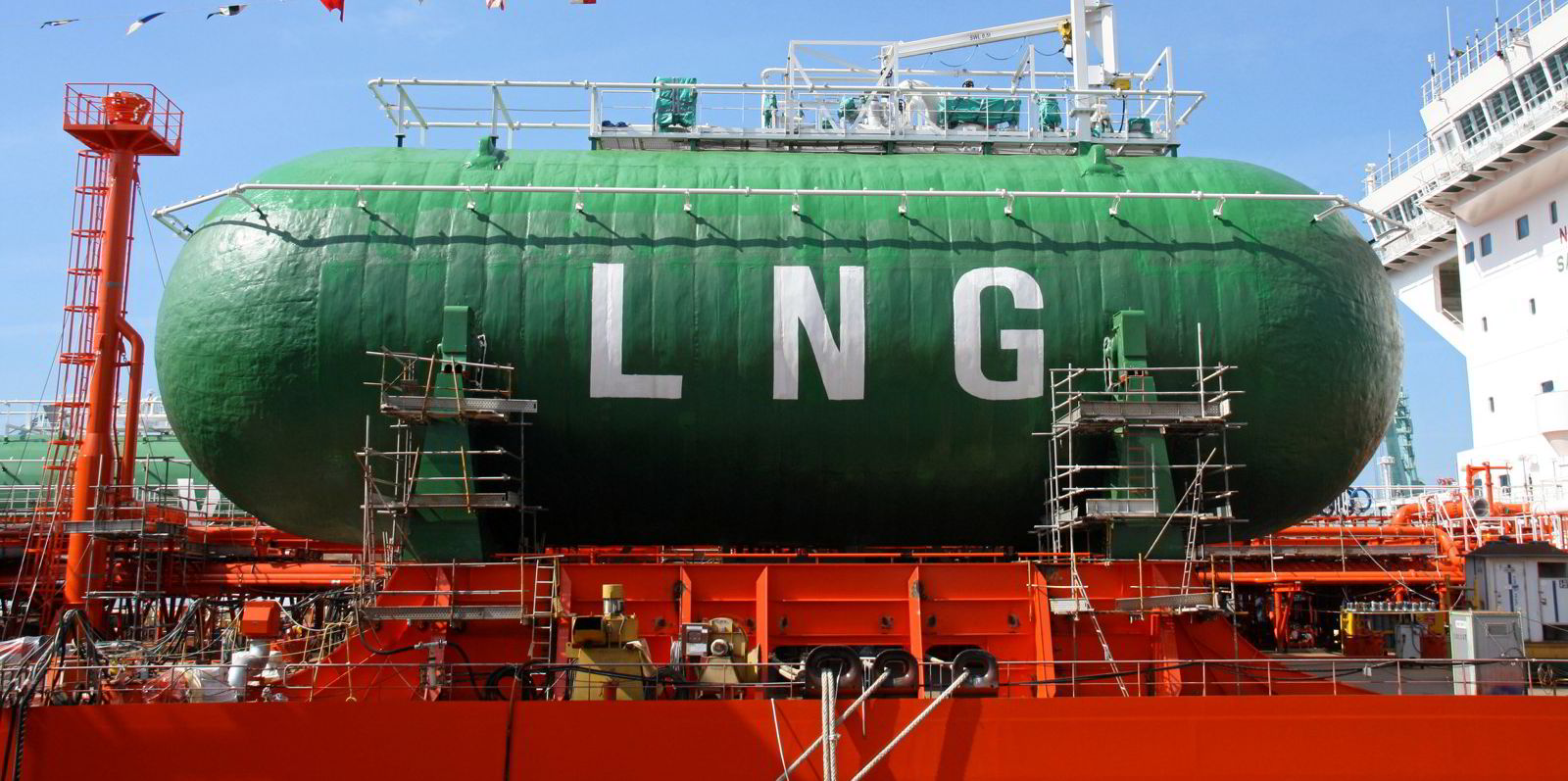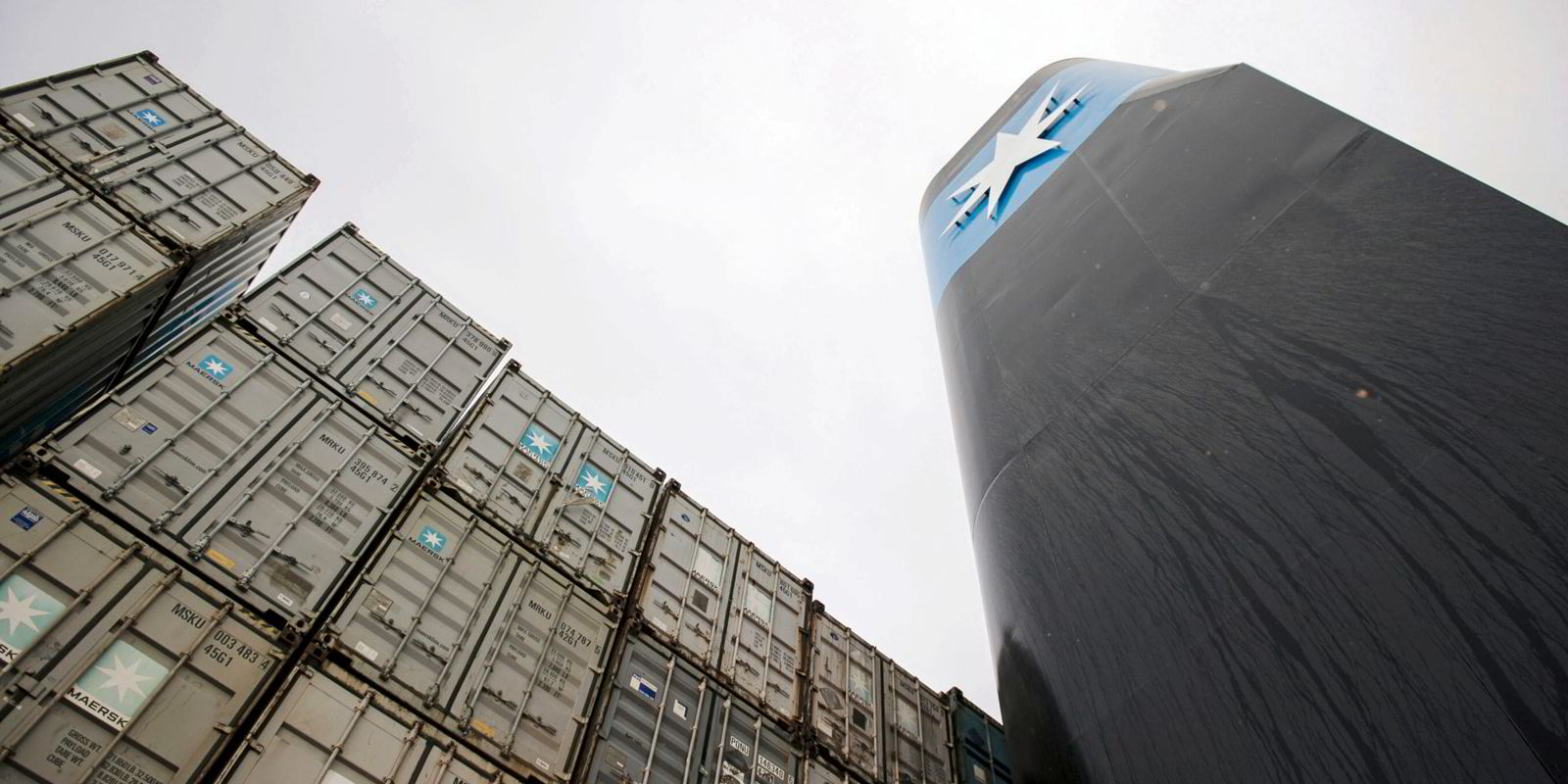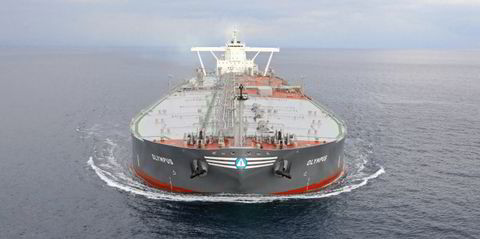VLCC owners that use LNG to power their vessels can save nearly $8,000 per day in fuel costs, according to a joint study by Channoil Consulting and Gibson Shipbrokers.
With regulators setting long-term targets to cut greenhouse gas emissions from maritime transport, a growing number of shipping firms have opted for vessels fuelled by both LNG and oil-based fuels this year.
In the recently published study, Channoil and Gibson said LNG would become “a dominant interim solution” for the climate efforts before greener fuels like hydrogen and ammonia become feasible options.
“LNG…is lower carbon than gasoil and fuel oil, it is readily available, and it is currently cheap,” the study said.
An LNG-fuelled VLCC needs to spend $11,518 per day in fuel, compared with $19,250 for a ship powered by very low sulphur fuel oil (VLSFO), Channoil and Gibson calculated from the prevalent fuel prices. Yearly savings amount to $2.8m.
VLSFO, based on oil, is the most used bunker fuel currently.
“LNG looks very attractive,” the study said. “The daily benefits are likely to support dual-fuel vessel investment plans.”
A dual-fuel VLCC costs $14m more to build than a conventional one. However, Channoil and Gibson said it can still generate an internal rate of return of 10% over a 15-year period based on fuel savings worth $5,000 per day.
LNG used as marine fuel has largely been limited to shortsea shipping and liner trades so far, with bunkering infrastructure for the fuel still under development in many parts of the world.
But the study suggests the LNG refuelling network is expanding because investments in LNG-powered vessels have recently doubled.
“LNG-fuelled engines will very likely offset their capital costs through operating cost advantages over traditional liquid fuels,” the study said.
“The technology may be expensive, but it is proven and current economics seem favourable.
“Recent trends suggest that LNG might become cheaper in the long run as compared to conventional fuels.”

A future carbon market
Moreover, as the European Union is planning to include shipping in its emissions trading system (ETS), Channoil and Gibson said LNG-fuelled vessels may achieve even more savings.
Assuming that LNG can reduce CO2 emissions by 20% and a European carbon offset price of €30 per tonne, the study concludes LNG-powered VLCCs can save $9,784 per day versus VLSFO-fuelled vessels.
“As and when the maritime sector is brought into the EU ETS, it would take a huge increase in the current carbon price for shipowners to deviate from their current fuel mix,” the study said. “A higher carbon levy could provide an attractive additional boost for LNG.”
In September, Trafigura proposed a levy between $250 and $300 per tonne of CO2 emitted from vessels to make low-carbon fuels more competitive.
If the proposal is adopted, Channoil and Gibson said fuel savings for LNG-fuelled VLCCs would reach $28,252 per day and even biofuels – much more expensive than oil-based fuels – could become competitive.
But they believe the consensus for a carbon price for shipping is somewhere between $100 and $150 per tonne, making biofuels uneconomical for shipowners.







